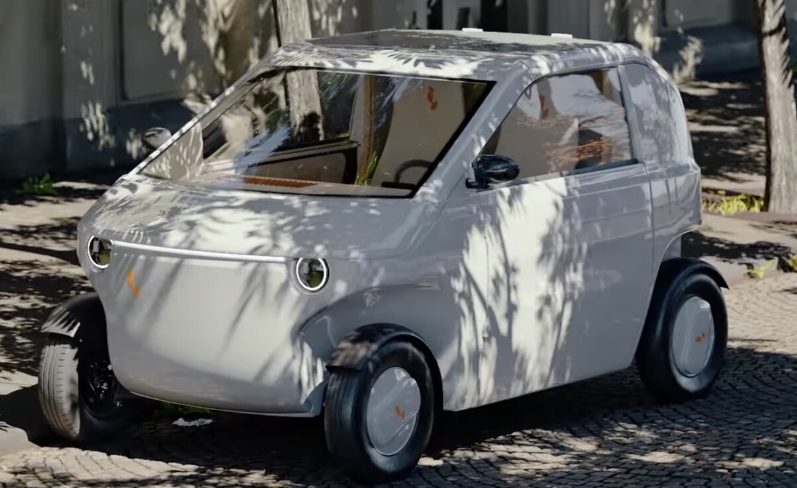
In this “do it yourself” we had seen everything. Beyond the classic toys (and not-so-toys), some companies have wanted to innovate by putting the customer in the role of “builder” of their products. Lomography invited you to build your analog camera. And Nintendo was surprised with its Mario Kart Live Home Circuit. What we had not seen until now was selling a car.
At Luvly they know that electric cars are not cheap. Especially if we want one delivered to the dealership, with all its wheels and controls available. As? Yes, we are not talking about delivering cars with disabled functions due to a lack of chips, we are talking about receiving a functional car with all its controls available.
Because that is what the workshops in charge of assembling our vehicle will receive. This Swedish company has devised a new way to ship its extremely cheap electric cars: by parts. The idea is that, when stacked well, the parts take up much less space than an already-built vehicle. So why not just send it to the destination?
Inside this box, you have your car
The Luvly 0 is a very simple car. It measures 2.70 meters long, 1.53 meters wide, and 1.44 meters long. The bodywork is mounted on an electric motor and a battery that promise a consumption of 6 kWh/100 km, a range of up to 100 kilometers, and a maximum speed of 90 km/h. It all adds up to a total of less than 400 kg.
The goal is to sell this kind of electric car for 10,000 euros. A starting price that has a major problem: distribution would eat up costs. Unless, of course, the space occupied by each vehicle is minimal. For this reason, in a container with a capacity for four cars, they are capable of moving the parts of 20 vehicles. Once at the destination, the car is assembled by workshops that have agreements with the brand. At the moment, in their web space, they do not indicate from which countries or regions they can be sent or where to find a workshop attached to their program.
Therefore, the only thing that we can assemble or disassemble as clients will be its battery. Because its weight is 15 kg and it is removable, so, as happens with some urban electric motorcycles, it is possible to remove the battery to charge it in a domestic socket.
At Luvly they should be aware of the reluctance that their product can raise. One of the first answers that we find on its website is related to the safety of the vehicle. As they say, the Luvly is completely safe and has been “designed with race car technologies” in terms of shock absorption.
Reducing the size of the product shipped can be essential for the viability of the same or the savings of a company. The cost of distribution is such that, for example, some Chinese brands are buying their boats to control the entire process themselves. In other sectors, Apple claimed that eliminating the iPhone charger allowed them to include up to 70% more phones on the same pallet.
The Cupertino company also claimed significant savings in CO2 emissions with this decision. According to their accounts, with the iPhone 12, they saved “2 million metric tons of carbon emissions every year.” Although Luvly does not give details of this type, they also claim that their product is more sustainable by distributing it this way.

Sharlene Meriel is an avid gamer with a knack for technology. He has been writing about the latest technologies for the past 5 years. His contribution in technology journalism has been noteworthy. He is also a day trader with interest in the Forex market.











